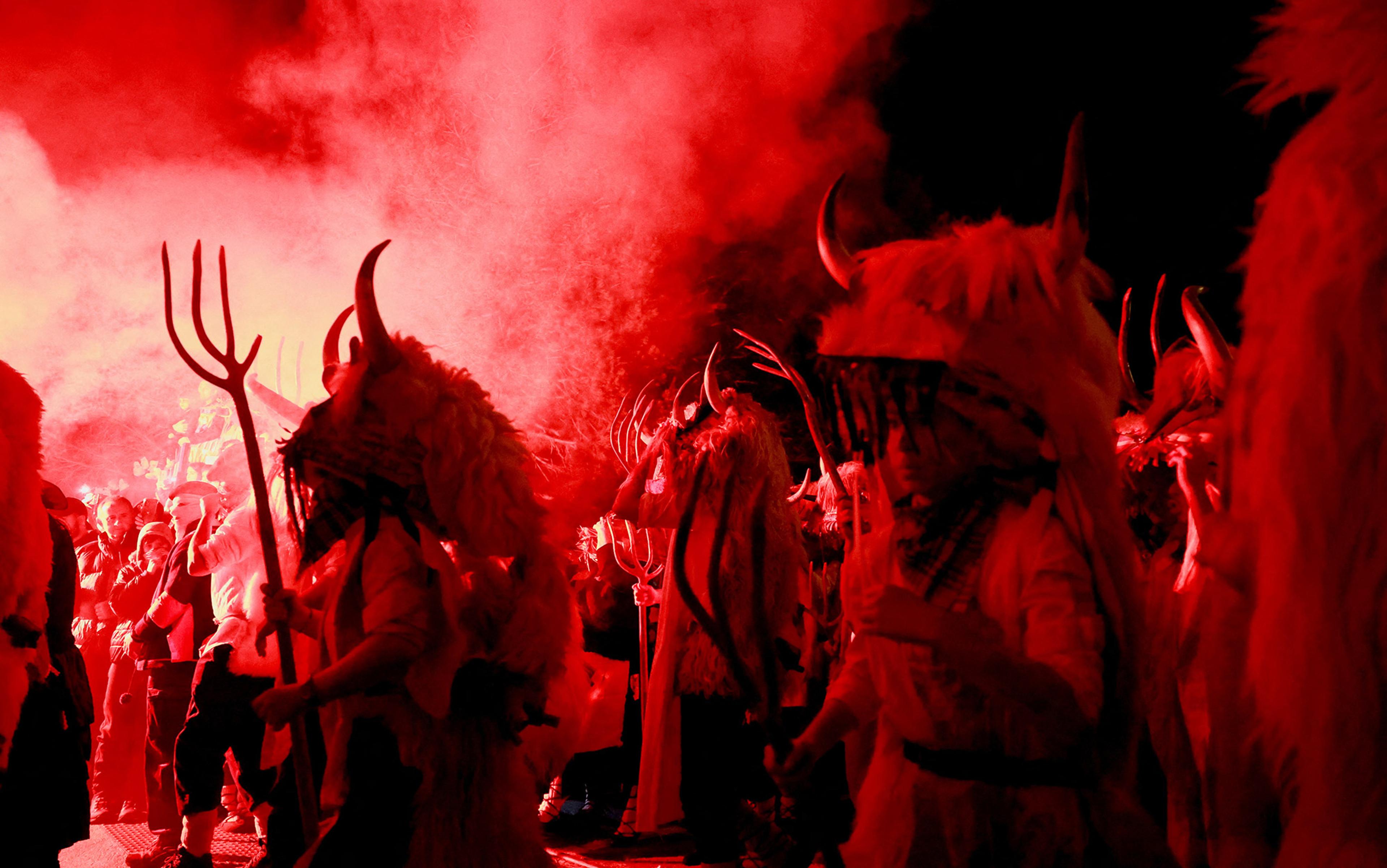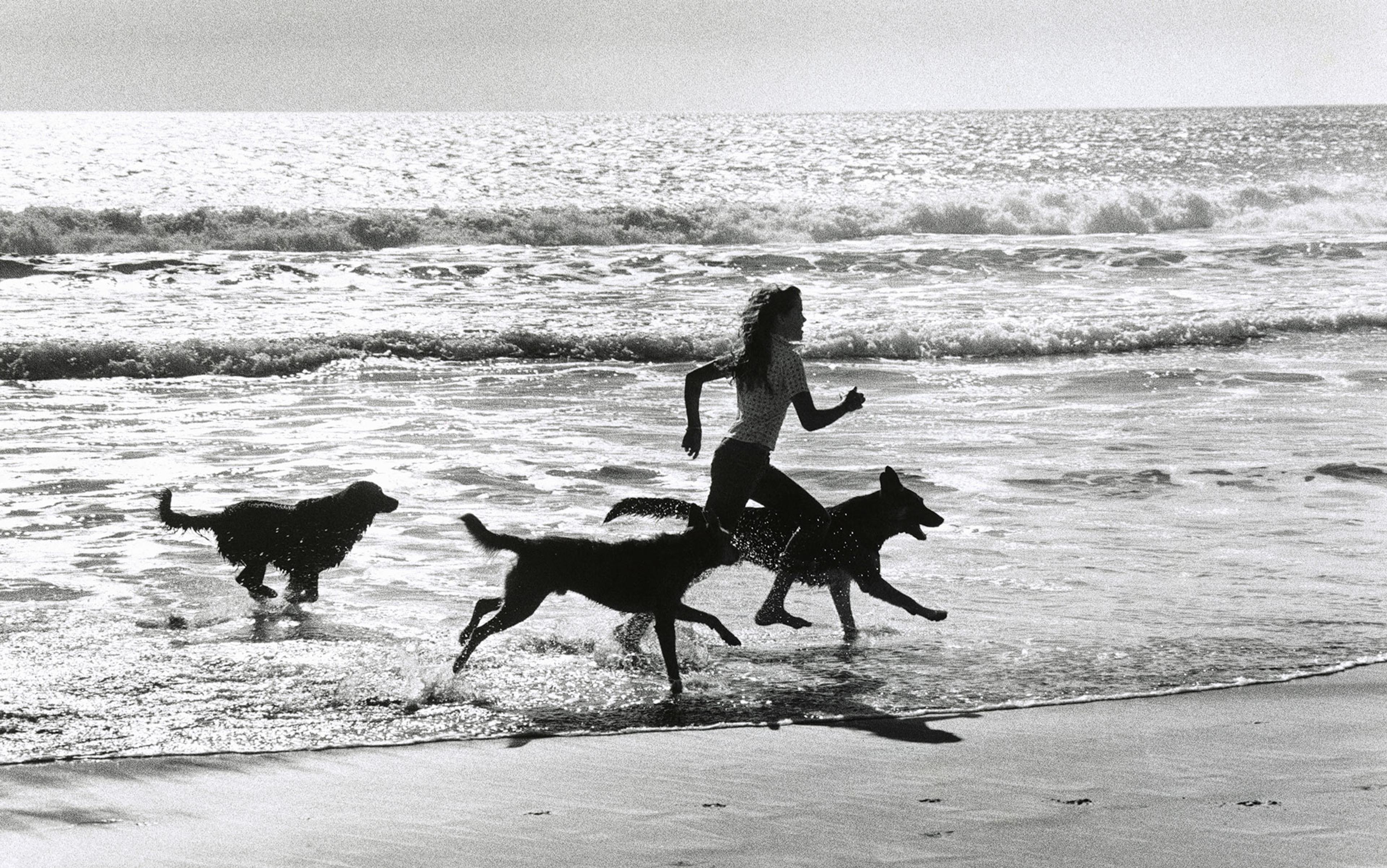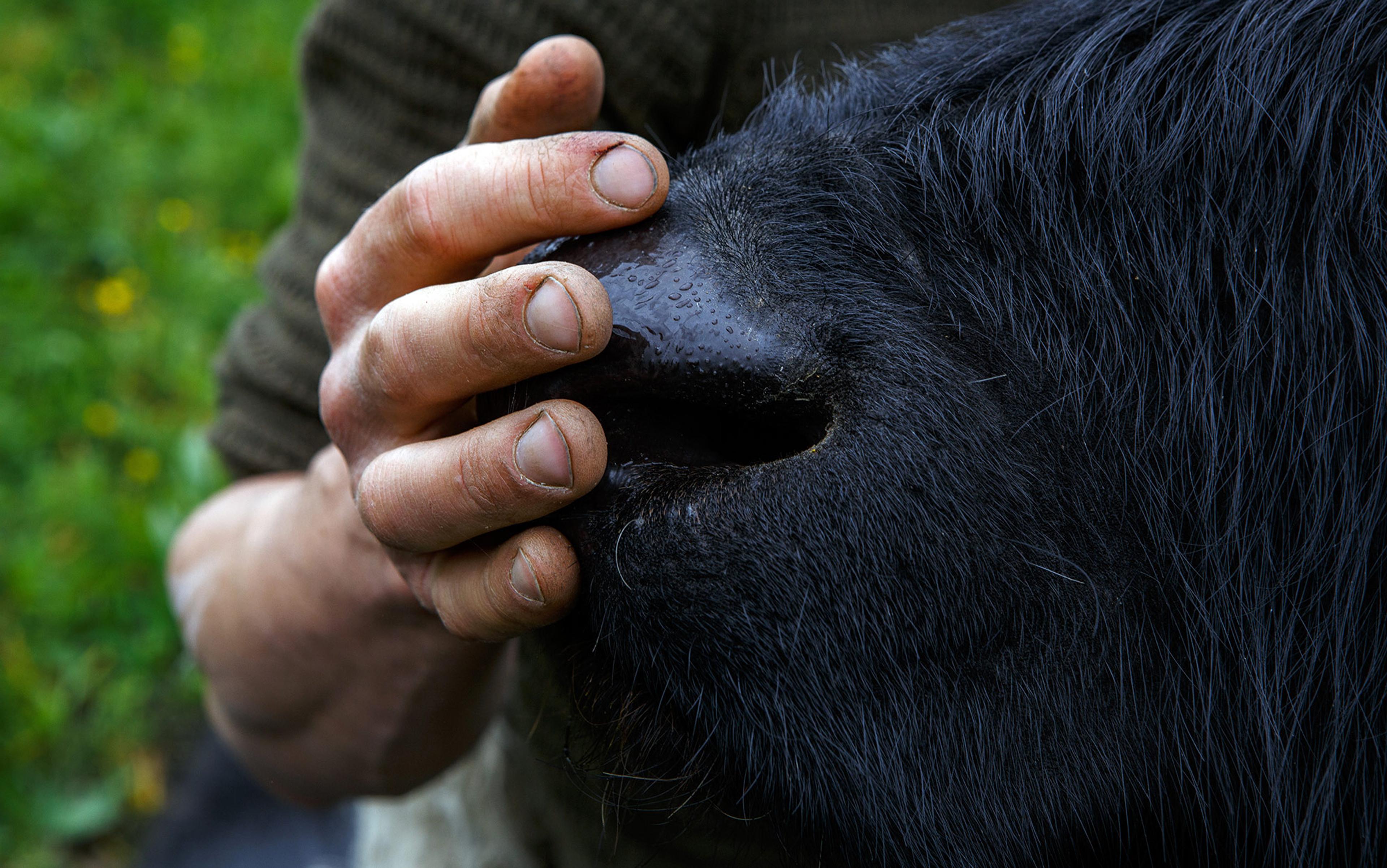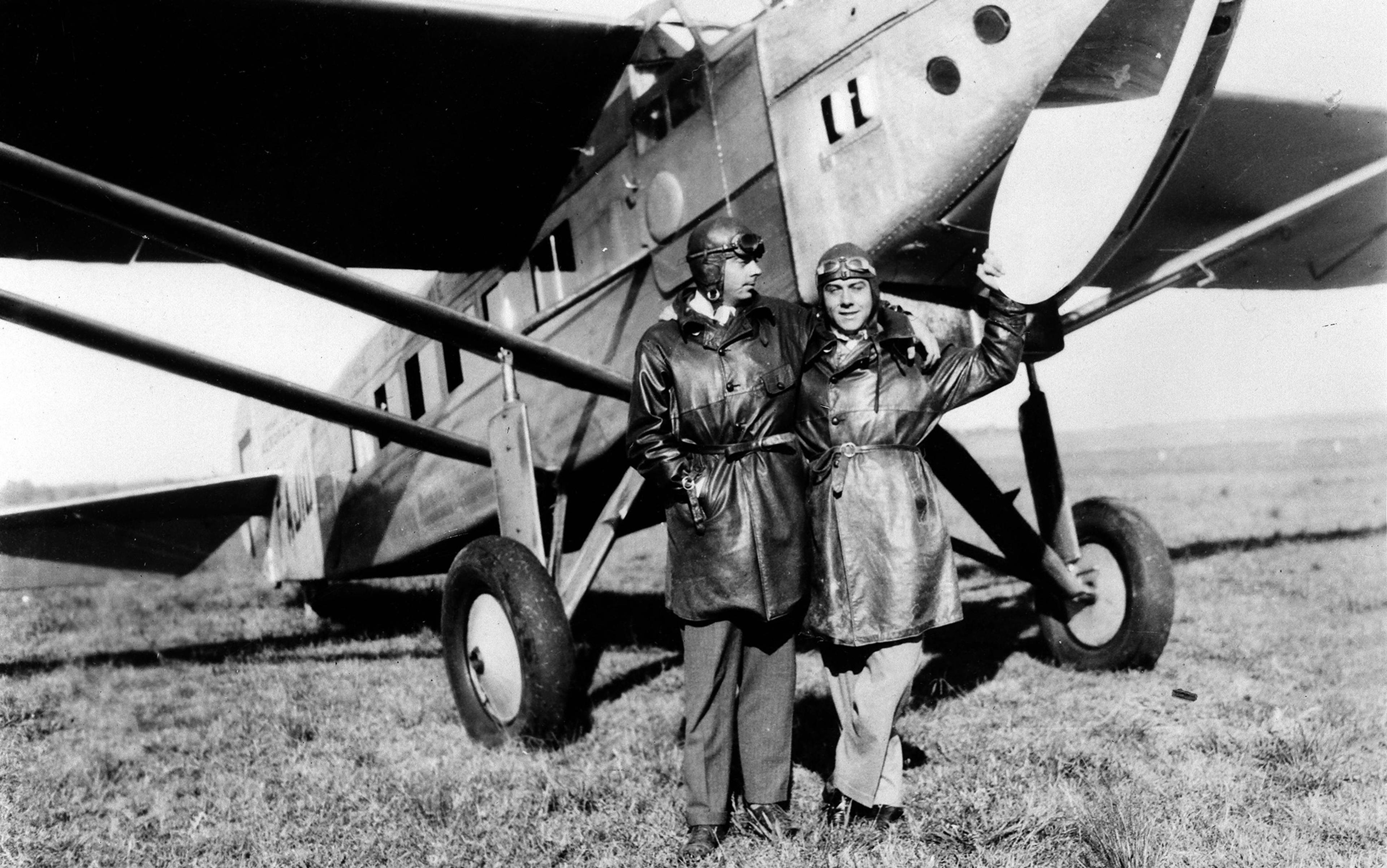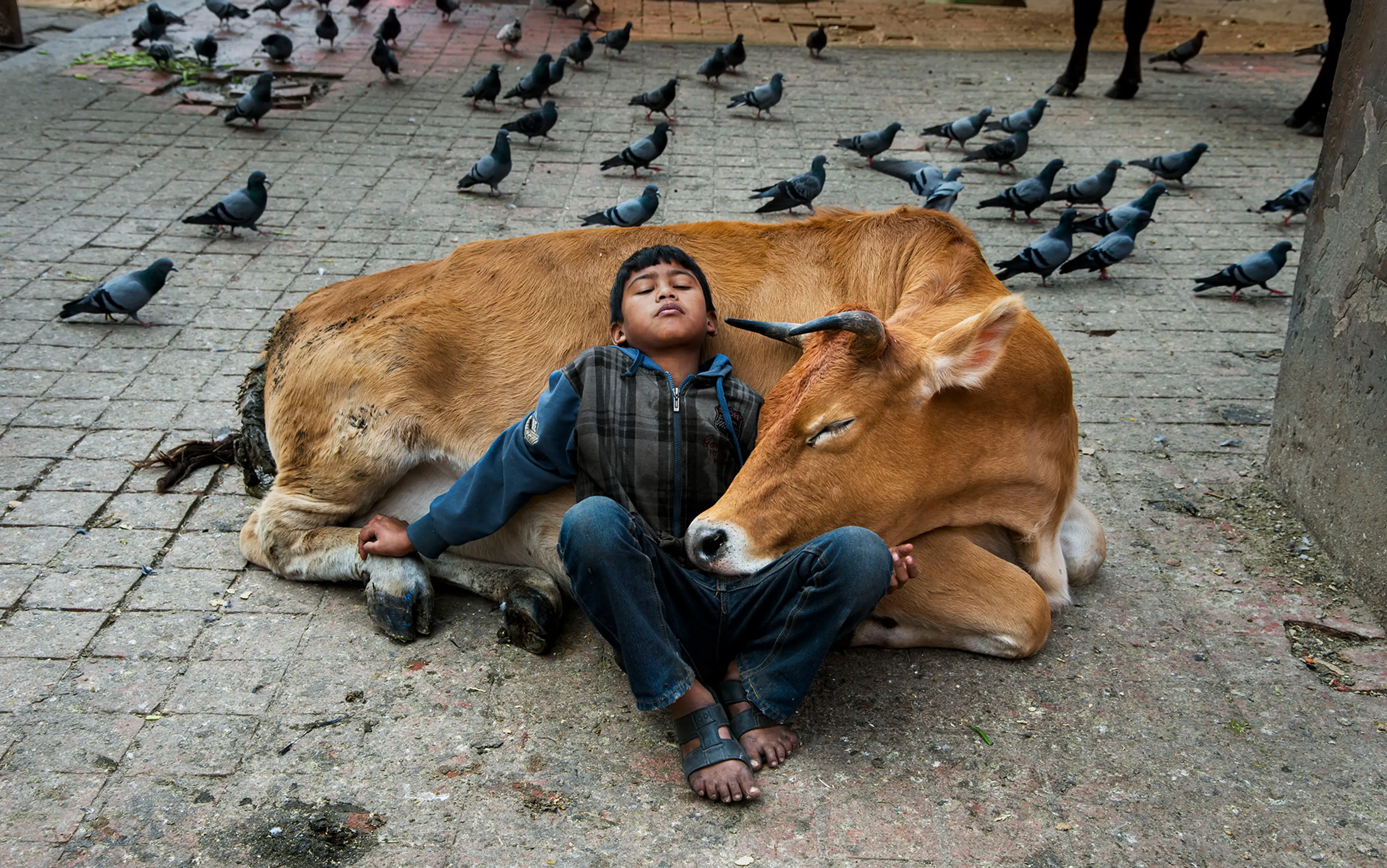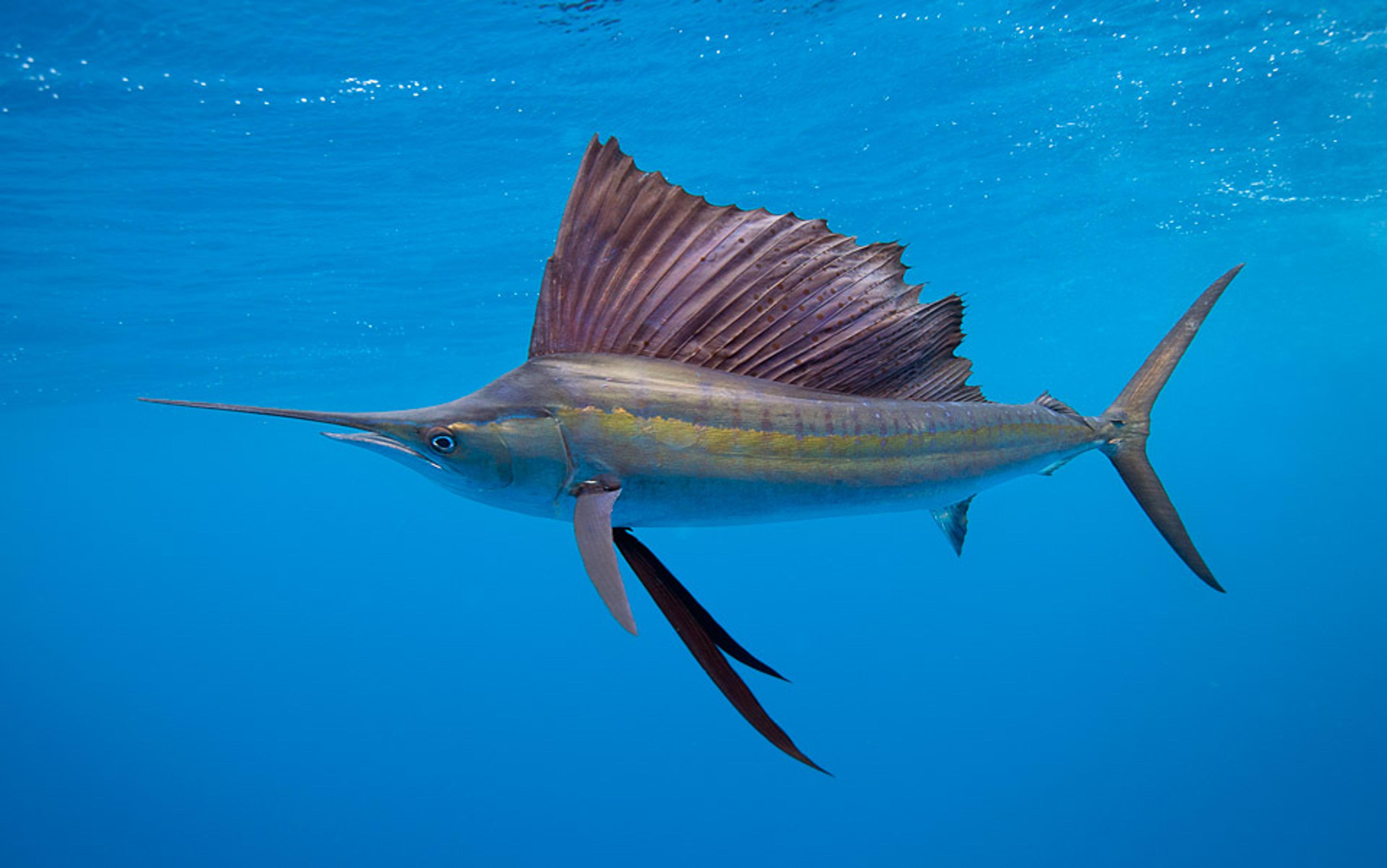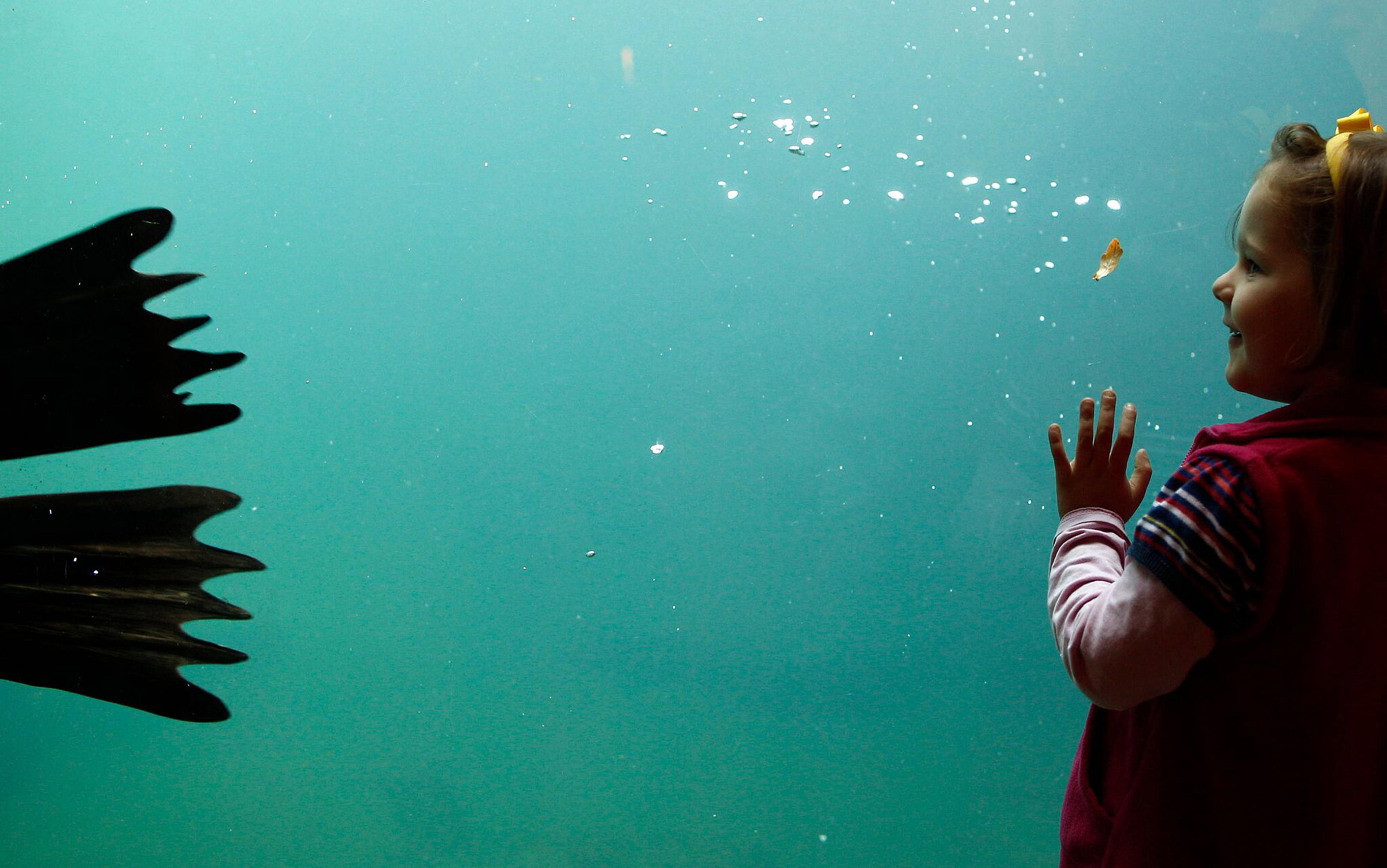The last time I felt other than human, I was chasing a friend’s child through the yard. ‘Bear,’ she said, pointing at me gleefully. Then she ran. By her expression, it was clear I should follow. The girl squealed as I lifted my hands and said, ‘Rawr.’ But I felt guilty. I did not want her to believe that all bears were trying to eat her. How could she know my performance was less about being a ‘bear’ than an anthropomorphised Disney trope? I was enacting a creature our own species had created. A few minutes of lumbering, though, and I didn’t care. I did not know what it felt like to be a bear – sniffing a carcass from 20 miles away, tracking the movements of unseen and unheard others – but I knew how it felt to crave a break. It was a thrill to slough off, for a few minutes, the expectations of my human form.
Later, as I recounted my surprised giddiness at ‘playing animal’, a friend quipped that I’d stumbled into my own kind of ‘feral girl summer’. He was a straight, cis millennial man, active on American dating apps, and he was seeing the trend everywhere. Lots of women were pronouncing themselves ‘feral’, a usage that had come to connote embracing chaos and ‘free[ing] one’s self from the conventions of what is required to be hot,’ as a 2021 Vice article headlined ‘The Freedom of “Feral Girl Summer”’ explained. Now, in 2023, the trend was almost passé. In August, The Washington Post published an explainer of the new animal oeuvre: ‘Rat Girl Summer’ was the embodiment of ‘a TikTok movement that emphasises living like a rat: scurrying around the streets at all hours of the day and night, snacking to your heart’s delight, and going to places you have no business going to.’
You might think that conjuring a trash-eating rodent would repel potential lovers, but a swipe of my friend’s Tinder suggests you’d be wrong. Young femmes are sick of decades of being typecast as bunnies and kittens. We’re scrappy, we eat what we want, we sit in nobody’s palm. You could argue that #ratgirlsummer (a hashtag now shared more than 30 million times on TikTok) has little to do with our relationship with real-life rats, just as a child’s impulse to play ‘bear’ has little to do with her relationship with real bears. But I think it’s worth considering what we are getting when we garb ourselves in the skin of the ‘rat’ or the ‘bear’, whether linguistically, virtually, or in costume. Not because these performances are accurate animal representations, but because the ways in which we make ourselves nonhuman have always reflected back our own yearnings and repulsions. We are as much running towards one cultural narrative – what the animal we are embodying ‘means’ – as we are running away from another: our sense of what the human ‘I’ means.
It is a uniquely precarious moment to be an animal of any kind. All around us, other species are disappearing some 10,000 times faster than base extinction levels, causing the ecologist Stephan Harding to write in the book Gaia in Turmoil (2009) that we are ‘hemorrhaging species’. And yet the blood loss is often invisible. We do not mourn the beings we never learned to see. This is Earth’s sixth mass extinction event, but it is the first precipitated by one species: ourselves. Amid habitat loss and the conversion of wild spaces into agricultural and suburban ones, real-life animals are increasingly being usurped by anthropomorphised doppelgängers. We encounter them daily in pop culture, advertisements, and online. According to a 2018 paper in PLOS Biology, the average French citizen, for example, sees more than four ‘virtual’ lions every day, which means that in a year, she witnesses more lions than exist in the whole of West Africa. Dressing as a lion for a costume party conjures less the real creature than this object of cultural taxidermy.
in examining our own experiences of ‘being animal’ we can learn to live and connect better in our human bodies
The evolutionary biologist E O Wilson coined the term ‘Eremocene’ to describe a contemporary era defined by both literal and existential isolation. He was referring to extinctions, but the phrase captures a particular paradox of modern life. On the one hand, we live in an anthropocentric society where human life is privileged to devastating ecological effect. On the other, as we play out increasingly online existences – lubricated by instant deliveries or the way we work and stream at home, alone – misanthropic solitude has also become increasingly normalised (just look at the memes). Not only are we failing to consider other species, we are flailing in our connection with one another. Recently, I asked a room of university students why an author might try to step inside an animal’s head. ‘Because animals are more likeable than humans,’ said one student. The whole room nodded. Popular discourse tends to silo these two issues, imagining that the breakdown in intra-species connection has nothing to do with the inter-species one, and vice versa. Looking at the moments where we visualise ourselves as nonhuman, though, suggests that in examining our own experiences of ‘being animal’ we can learn to live and connect better in our human bodies, too.
Not long after ‘playing bear’, I felt myself as nonhuman in a more mundane, terrible way. I was standing before a motion-sensor soap dispenser at an airport, and nothing was coming out. A minute earlier, I had watched someone seamlessly wash her hands. Now, as I moved from one dispenser to another, I felt a prickly horror. My body was failing me. As my wet fingers waved fruitlessly around, I wondered what the dispensers knew that I did not. Didn’t I exist? Weren’t my limbs enough? Even after I’d coaxed out soap, my sense of dizzy dislocation lingered. The dispenser had not made me feel like a human; it had made me feel like a rat in a lab, trying to press a button for a treat. It was the same thing I felt being herded into lines: What am I, a cow? My dignity in these moments depends on the preservation of an animal-human hierarchy, one where my species commands more respect. The rapid technologising of modern life has separated all of us from our bodies, but rather than view ourselves in union with our nonhuman neighbours, we tend to get defensive. Hungry for our own dignity, we dig deeper into the myth of our exceptionalism.
The moat between ‘human’ and ‘animal’ has rarely been so large. I put the words in quotes because, of course, the binary is false. To say ‘“Animal” … is one of the ways we say “Other”,’ writes philosopher David Wood. He calls the word ‘a form of deadening shorthand’. In reality, the genetic difference between two humans averages around 0.1 per cent, while the difference between a chimpanzee and a human is around 1.2 per cent. This seems like a decent gap until you consider that the 1.6 per cent difference between a gorilla and a human is equivalent to the difference between a gorilla and a chimpanzee, according to the Smithsonian Institution. We have as much genetic material in common with gorillas as chimpanzees do.
From Aristotle on, philosophy has defined humans as animals who will not only reproduce and socialise, but also mould their environment. Very often, we are unaware of how our bodies shape our surroundings. We imagine ourselves apart from nature, as if the sunscreen from swimmers’ limbs was not bleaching coral, or as if the ashes we scatter on mountaintops was not altering soil chemistry. Still, we’re not the only ones shaping our environment. Even extinct animals live with us in traces. Northern trees like the oak might have evolved to grow back because elephants once trampled them. In The Second Body (2017), writer Daisy Hildyard makes a case for our having two bodies: one contained in our skin, and one that spills beyond it, interacting with global and environmental systems. The whale’s lungs are infused with our cigarettes and dust, she writes, and when that whale dies, her dissolving corpse disperses back into the ocean, where it will be eaten by a shrimp, and then by you. In this light, the separation between ‘animal’ and self is, at the most literal, embodied level, false.
To imagine ourselves in another animal’s skin, even in a glib #ratgirl way, is an utterly human instinct
The question of what cognitively separates human and animal is, believed Jacques Derrida, perhaps the basis of human thought. In The Descent of Man, and Selection in Relation to Sex (1871), Charles Darwin ventured that only humans are self-conscious, if by that we mean able to reflect on ‘what is life and death, and so forth’. Researchers now know that many animals do, however, have a sense of self. An animal can know that this is my tail, or that is my territory. And yet, while animals such as primates and dogs will exhibit signs of envy and jealousy, humans think not only I want your meal, but also I want to be in your body, I wish I was you. The mimic octopus can change its colouration to imitate the more dangerous sea snake or lionfish, but it does this out of self-preservation, not self-expression. Perhaps we humans are defined less by our awareness of who we are than by our capacity to understand and yearn to become bodies we are not. Who has not looked at a soaring bird and wished to live inside her bones?
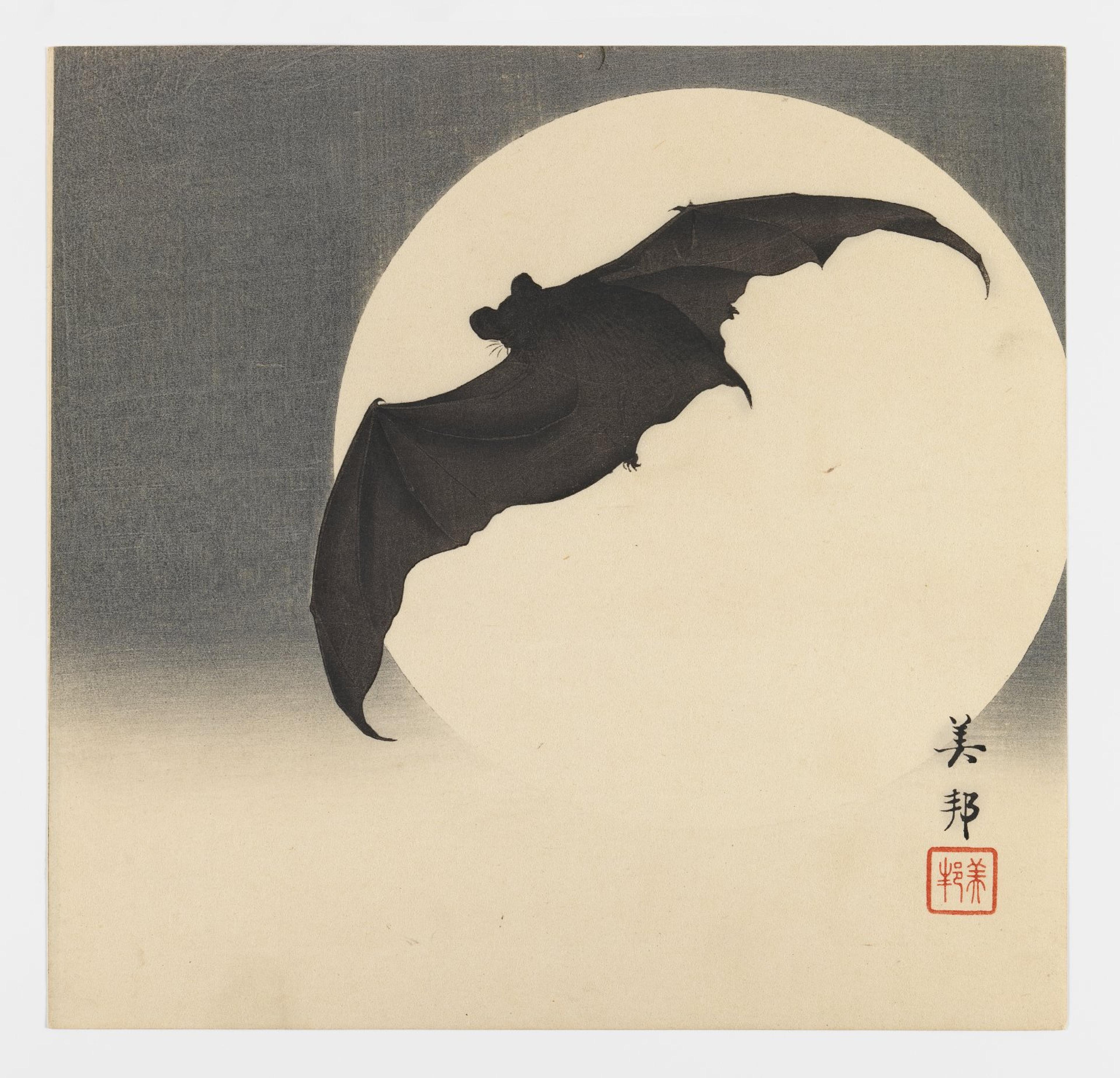
Bat in Moon (c1905) by Takahashi Biho. Courtesy the Brooklyn Museum
Our inability to know what it would feel like inside that other animal propels the fantasy of transmutation. ‘I want to know what it is like for a bat to be a bat … [but] I am restricted to the resources of my own mind, and those resources are inadequate to the task,’ wrote the philosopher Thomas Nagel in his 1974 essay ‘What Is It Like to Be a Bat?’ We each live in a sensory bubble called an Umwelt, a term deriving from German, and generally understood to mean ‘self-centred world’. The Umwelt takes in not just our surroundings but the way we perceive them. I feel a giddy sensory overwhelm walking toward a blooming lilac tree, while the robin sees also the magnetic field around it, and listens to the earthworms writhe beneath its trunk. Neither of our sensory worlds is better than the other; they are just very different. Everywhere we go, parts of our world are invisible, not because we choose to ignore them, but because we cannot fathom them. Our humanness is what allows us to both understand, and yearn to cross, this cognitive gap. ‘The act of contemplating the Umwelt of another creature is so deeply human and so utterly profound,’ writes the science journalist Ed Yong in An Immense World (2022). To imagine ourselves in another animal’s skin, even in a glib #ratgirl way, is an utterly human instinct.
Slippages between human and nonhuman forms have, across history and cultures, been far more fluid. ‘[I]ndigenous peoples have never forgotten that nonhumans are agential beings engaged in social relations that profoundly shape human lives,’ writes the Native studies scholar Kim TallBear. The very idea of a binary between human and nonhuman stymies a logic whereby ‘objects’ and ‘forces’ such as stones and thunder contain sentience too. During the Upper Palaeolithic period, now considered to have been the seedbed of human consciousness, cave drawings depicted men with hooves, and beasts with hands and spears. Indigenous creation stories tell of humans descending from animals, marrying them, and morphing between forms. Zeus was said to transform into a swan, a bull, a snake; Ganesh, one of the most worshipped Hindu deities, has an elephant head and four human arms. It was not just gods and shamans who took on animal traits, it was humans themselves, often to summon strength in wars and hunts. The Old Norse Berserkers are thought to have fought beneath bear hides; Lakota hunters donned wolf skins. Humans might be unique because of our capacity for symbolic thought, but, writes John Berger in the essay ‘Why Look at Animals?’ (1980), ‘the first symbols were animals’. We have long imagined ourselves through the bodies of other creatures.
Today, there is perhaps no animal we are more unmoored from than ourselves. ‘The world is now dominated by an animal that doesn’t think it’s an animal,’ writes the natural philosopher Melanie Challenger in How to Be Animal (2021). ‘And the future is being imagined by an animal that doesn’t want to be an animal.’ It is shame that drives us to evade our animality, contends philosopher Martha Nussbaum in the book Hiding from Humanity (2004), so uncomfortable are we with our own ‘propensity to decay and to become waste products ourselves’. The more we confront the degradation of our oceans and lands, however, the more we must face that it’s not just animal habitat under threat – it’s our habitat, too. Faced with this mounting unliveability, we look to the nonhuman for ideas of survival. To be a rat in a rotting city is to make out OK. In the book Beyond the Doctrine of Man: Decolonial Visions of The Human (2019), Joseph Drexler-Dreis and Kristien Justaert argue that we must reject the very game of defining the human. Labelling individuals as ‘animals’ – refuting their humanity – has long been a project of the racist, colonial, sexist imagination. Only by rejecting these legacies of white-settler anthropocentrism can we imagine better, less hierarchical ways of existing among, between, and within species.
Because our human contours are less policed when we are children, enacting an animal as an adult, as I did with the bear, can feel like vacationing in the body of one’s younger self. Kids scurry, snack, yip, don tails, and eat with their hands. Reflecting on her childhood in the essay collection The Abundance (2016), Annie Dillard writes of feeling ‘transparent to myself, unself-conscious’. Growing older meant growing into the sociocultural expectations of a gendered human body, experiencing a jam of awareness around how to steer it. Though Dillard describes this new, adolescent mindset in animal terms (‘I was a dog barking between my own ears’), her implication is that growing into human consciousness entails unmooring from nonhuman life and watching one’s outer world fade away. Is it any wonder we want to escape the bark? To fly from our own heads?
One night, when I was in my early twenties, I left a bar alone around dusk. Walking to my bike, I became aware of quick footsteps behind me and turned in time to see a stranger throw his arms around me. The man, clearly under the influence, told me I was someone that he loved. His breath was at my neck. The man would not let go of my body, but I was shocked, looking at my hands, to see they would not move, nor would my voice speak. I wrote about this moment in my book Wolfish: The Stories We Tell About Fear, Ferocity and Freedom (2023), as a time where I had felt, uncomfortably, like animal prey. Though another stranger intervened, and I escaped without physical harm, I struggled to describe that night. It wasn’t until a male reviewer referred to the assault as a ‘bearhug’ – a word I’d previously associated with hugs from people I love, not a stranger’s arms landing on me, unbidden, in the dark – that I realised how the language of ‘bear’ obscured not only the threat but its human reality. A man had grabbed me, not an ursid. It seemed important not to dodge my own species’ accountability.
After that night, and the splinter-like accumulation of other terror-inducing moments like it, I moved through the world differently. I became hypervigilant whenever I walked outside after dark, checking closets when I got home at night. I sensed I was being irrational, but I could not shake it off. It wasn’t until I spoke with the biologist Liana Zanette about her research into animal fear that I began to understand what I was going through: however committed I was to disentangling my story from fairytale lore (the man on the sidewalk was no more a bear than the Big Bad Wolf), we were still both animals. I wanted to be able to think myself out of my anxiety, but after a deeply fearful experience, Zanette reminded me, all animal bodies will change. Even a plant will alter its cellular biology after something stressful happens. We remember trauma because we learn from it to stay alive. Our conversation helped me see that my jumpiness was not neuroticism. I was just another animal, learning from the things that scared me, trying to survive.
Given the biological gap between wolf and me, what could I learn by dressing in her coat?
Though my experience suggests that we might dilute our anxiety by grounding ourselves in our animal bodies, others try to shortcut such anxiety by stepping into another’s form. Tokyo engineer Toru Ueda recently spent $23,000 for a life-size replica wolf suit, which he said helped him forget his human ego, and made his childhood dream come true. ‘All kinds of troubles, related to work and other things – I can forget about them,’ he told a journalist. My immediate feeling was curiosity. I wanted to walk inside the wolf. At the same time, wearing the costume, however fine its attention to detail, would make me only a human in a wolf suit. I would not be able to bite through a bone, trot 30 miles a day, or deduce, via markings, the sex, age, and last meal of other wolves that passed beside me. Given the biological gap between wolf and me, what could I learn by dressing in her coat?
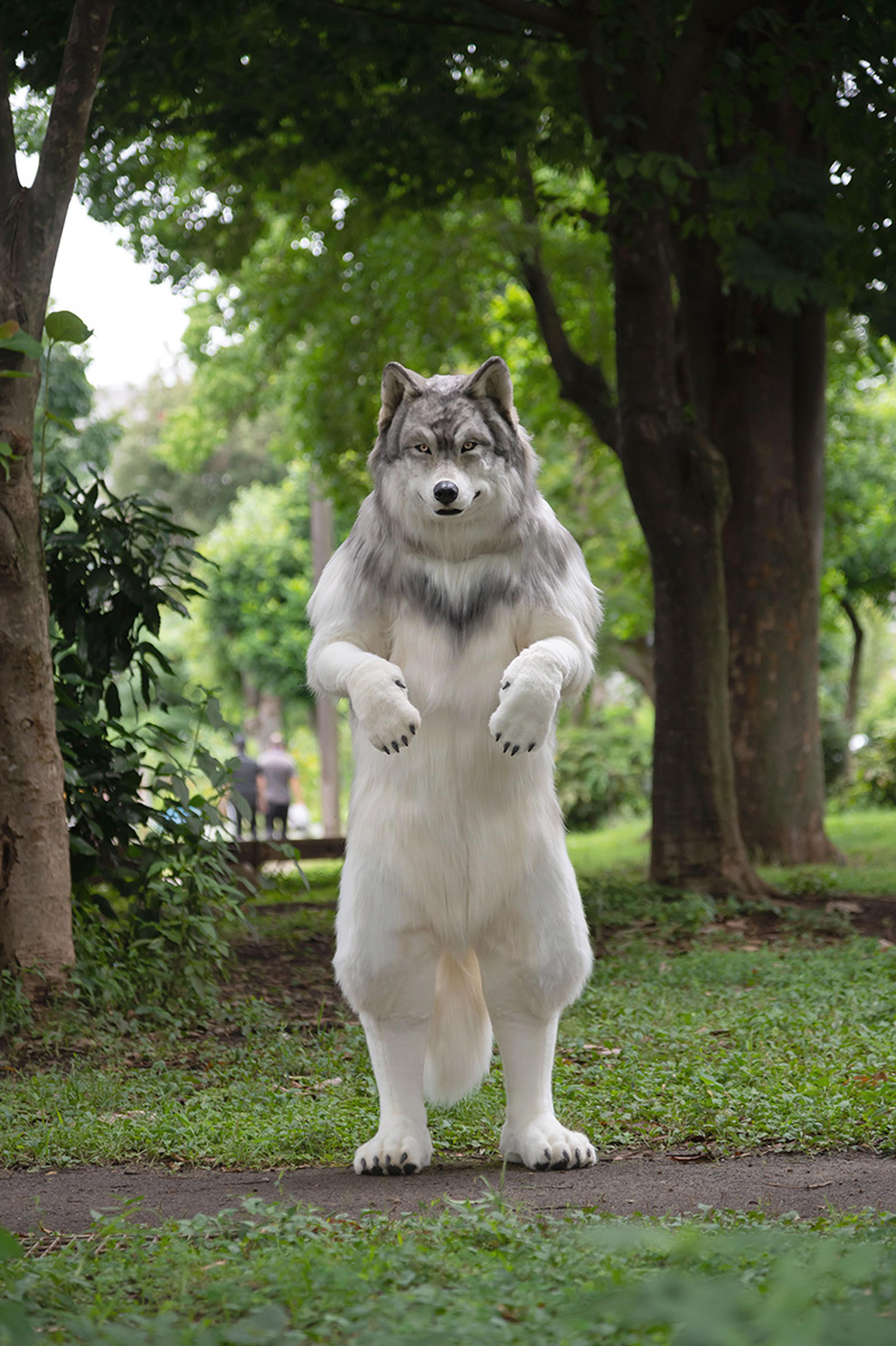
Courtesy Zeppet Studios
Daniel Pimentel, a professor of immersive media psychology at the University of Oregon, studies what putting humans in virtual animal bodies will do to their brains. In a gamified research study he calls ‘Project Shell’, participants take on the body of a loggerhead sea turtle, trading their arms for flippers as they dodge passing ships and fishing flotsam on their journey from hatchling to adult. Pimentel found that participants left the game with new environmental attitudes, increased compassion, and a willingness to donate to marine conservation efforts. ‘Your brain stores [virtual reality] experiences in autobiographical memory,’ he told me. ‘It’s happening to you, versus something you’re seeing.’ Players adopted what he calls a ‘body transfer’ response, perceiving themselves as turtles. The younger we are, the more fluid our sense of human identity, and the greater our ease at embodying another being. Knowing this, Pimentel felt a unique responsibility as a game designer. Children had more emotionally reactive responses to the virtual reality (VR). They would remember the sea turtles’ trauma as their own.
In 2022-23, the Portland Art Museum hosted the US debut of ‘Symbiosis’, a Dutch VR project, inspired by ecofeminist Donna Haraway’s book Staying with the Trouble (2016). When I heard about the exhibition, described as a ‘performative, multiuser, and multisensory installation in which the human body will be redesigned to merge with technology and nature itself’, I signed up immediately. I’d been intrigued by a section in the blurb about inhabiting a butterfly, but when it came time to select the life form that I would embody, another participant was quicker to claim it. And so I, a deferential animal, found myself in the last remaining slot: slime mould.
Immobilised in a straitjacket-like sleeping bag, with a headset puffing oxytocin at me, I tried to relax into my 25-minute experience. My field of vision became hallucinatory. Occasional animal-esque shadows passed before me, but mostly my world consisted of firework-like sprays of colour. Balloons expanded and contracted around my body, as if I were bubbling. Twice, I was nudged to open my mouth, and in went a Michelin chef-orchestrated nibble devised through molecular gastronomy to mimic the proteins a slime mould would taste: algal and jellied, then wafery and sweet. Will you believe me if I say that, as a slime mould, the chatter of my mind began to fade? That, for a few seconds at a time, I forgot who and where I was? Forgot that, a week earlier, a childhood friend had died too young? That dragging my human body around had, in the sorrowful days since, felt both impossible and rude? And then it was time for the attendant to help me wiggle out of my suit. I stood in the dim gallery, slightly clammy, blinking. I kept catching myself looking at my limbs and wiggling my fingers, as if I were on a low dose of psychotropic mushrooms.
A 2022 study in Scientific Reports found that relational group VR can have a cognitive effect comparable to that of a medium dose of LSD or psilocybin, sparking what scientists call ‘self-transcendent experiences’, where the boundary between self and world splinters. Now I had to re-enter not only my environment but my body, which felt almost as surreal as those first seconds as a slime mould.
To perform the nonhuman is also to consider the ways we perform the human
Religious studies scholar Karl Luckert writes about Navajo hunters entering sweat lodges to embody animal predators and psychologically transform into them before hunts; they then echo this ritual after the hunt, to transform back into their human selves. It is a reminder that ‘leaving’ the human body means not only a departure, but a homecoming. In Being a Beast: Adventures Across the Species Divide (2016), Charles Foster recounts a year spent living with, and as, animals such as the fox and badger. As the latter, he sleeps in a burrow shaped by his hands, crushes earthworms with his teeth (‘they … have a very distinct terroir’) and learns the art of gazing at nothing, becoming ‘a lump of idling software in a box made of meat’. Humans have more sensory prowess than we often let ourselves believe, Foster finds, and the cause of biodiversity conservation would be helped if more of us learned to see the world as it appears for those outside our own bodies. And yet his revelations are not just about the nonhuman world. Attuning himself to other perspectives teaches him about ‘the exhilarating inaccessibility of all creatures, including, perhaps particularly, humans’.
Part of the strangeness of trying to connect with a species beyond ourselves is that the act of grasping can feel oddly familiar. Every day, in the office and around the dinner table, we confront the emotional distance between other bodies and ourselves. To perform the nonhuman is also to consider the ways we perform the human and police others’ performances of it, too. Imagining what a parrot thinks when he imitates words, writes environmental and gender scholar Kari Weil, is also to imagine what a human means when she opens her mouth. ‘[A]re we not all dependent upon a field of signification that precedes us, making it difficult to say that language itself is ever not imitative?’ she writes. ‘How do we know what our lovers mean when they say “I love you”?’
Outside the exhibit, it was a late afternoon in February, the sunlight muted and metallic. Fumbling for my gloves, I realised I was a few feet from one of my fellow ‘Symbiosis’ participants. The woman was about my grandmother’s age, shaking her head with awe. She had just emerged from being the front half of a deep-sea fish. It was clear we were both struggling to put words to what we had experienced, but it was also clear that neither of us wanted to leave. We made fumbling small talk for a block, and then, trading smiles, said goodbye. She didn’t know the grief bubbling inside me, and I didn’t know the feelings hiding inside her, but we understood something about each other that nobody else on the sidewalk did. When, stepping into her car, she raised a few fingers to wave, I knew what she meant. The language of a hand could be enough.
This was the moment I kept thinking about from that day. Not that I had become a slime mould, but that, in occupying the imagined gaze of another being, I had become re-attuned to the limits and the thrills of my own sensory world. When a breeze arrived with a whiff of trash, I held my breath, then, looking at the crow above me, wondered what she smelled. My Umwelt wobbled. There was so much I did not know about how to best occupy a body on our warming Earth. A squirrel vaulted off a power line, her tail fluffing into a perfect parachute. I marvelled at her; I wanted to be her, but then she was gone and I was left with the warm animal of myself.
